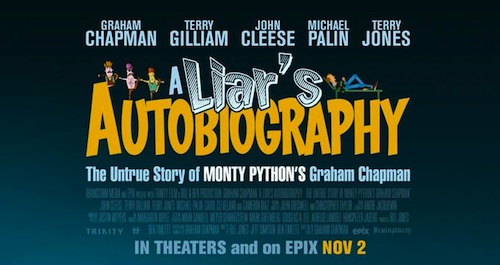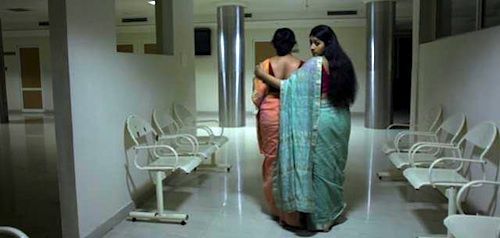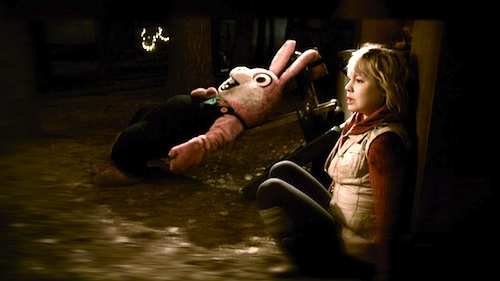By Joe Bendel. Miami Vice lied to you. It wasn’t Cuban or Colombian cartels that controlled the South Florida drug trade in the 1980’s. It was the ninjas. However, they met their match in Tae Kwon Do grandmaster and inspirational speaker Y.K. Kim. He and his students lay down some hard rocking justice in his long lost, feather-haired, labor of love, The Miami Connection, which Alamo Drafthouse saved from obscurity to conquer the world through a series of midnight screenings, beginning this Friday (hopefully) in New York.
![]() The Miami Ninjas pick a fight with the wrong band when they try to roust Dragon Sound from their new gig at “Central Florida’s hottest new night club” in Connection, co-directed by Kim and experienced exploitation auteur Woo-sang “Richard” Park. They are a tight band, who live, train, and rock together with Mark, their Tae Kwon Do master. The ninjas and drug dealers might have formed an alliance, but they are no match for the one-two punch of Tae Kwon Do and cheesy 80’s synthesizer rock.
The Miami Ninjas pick a fight with the wrong band when they try to roust Dragon Sound from their new gig at “Central Florida’s hottest new night club” in Connection, co-directed by Kim and experienced exploitation auteur Woo-sang “Richard” Park. They are a tight band, who live, train, and rock together with Mark, their Tae Kwon Do master. The ninjas and drug dealers might have formed an alliance, but they are no match for the one-two punch of Tae Kwon Do and cheesy 80’s synthesizer rock.
Further complicating matters, Mark’s number one protégé John has been dating Jane, the kid sister of Jeff the gang leader, against his wishes. Granted, he overreacts, but it is hard to blame him for being underwhelmed by the gawky lover-boy. Indeed, things get personal quickly. The plot might be a touch hackneyed (you know when a Dragon Sound member puts on a fancy new suit for a special occasion, he is in for a world of hurt) and the dialogue is what it is (and that’s not much), but the fighting is pretty awesome, courtesy of Grandmaster Kim – who clearly has no aversion to a spot of blood here and there. Former champion kickboxer Maurice Smith certainly knew how to conduct himself in a fight scene as well, but he has some of the most laughable drama as Jim, the keyboard player with the unhealthy mailbox obsession.
Hats off to the in-damn-domitable Y.K. Kim, who is finally getting distribution and cult fandom for Miami Connection, after the snobby Florida critics brusquely dismissed its ill-fated Orlando release in 1987. Thanks to those stick-in-the-muds, Kim & Park’s heartfelt smackdown was almost lost to posterity. That said, the Miami Connection experience is best shared with a rowdy group of likeminded viewers. Hopefully, large and vocal crowds will duly turn out when it screens this Friday and Saturday nights (11/2 & 11/3) at the Landmark Sunshine in New York.
Posted on October 30th, 2012 at 1:16pm.







